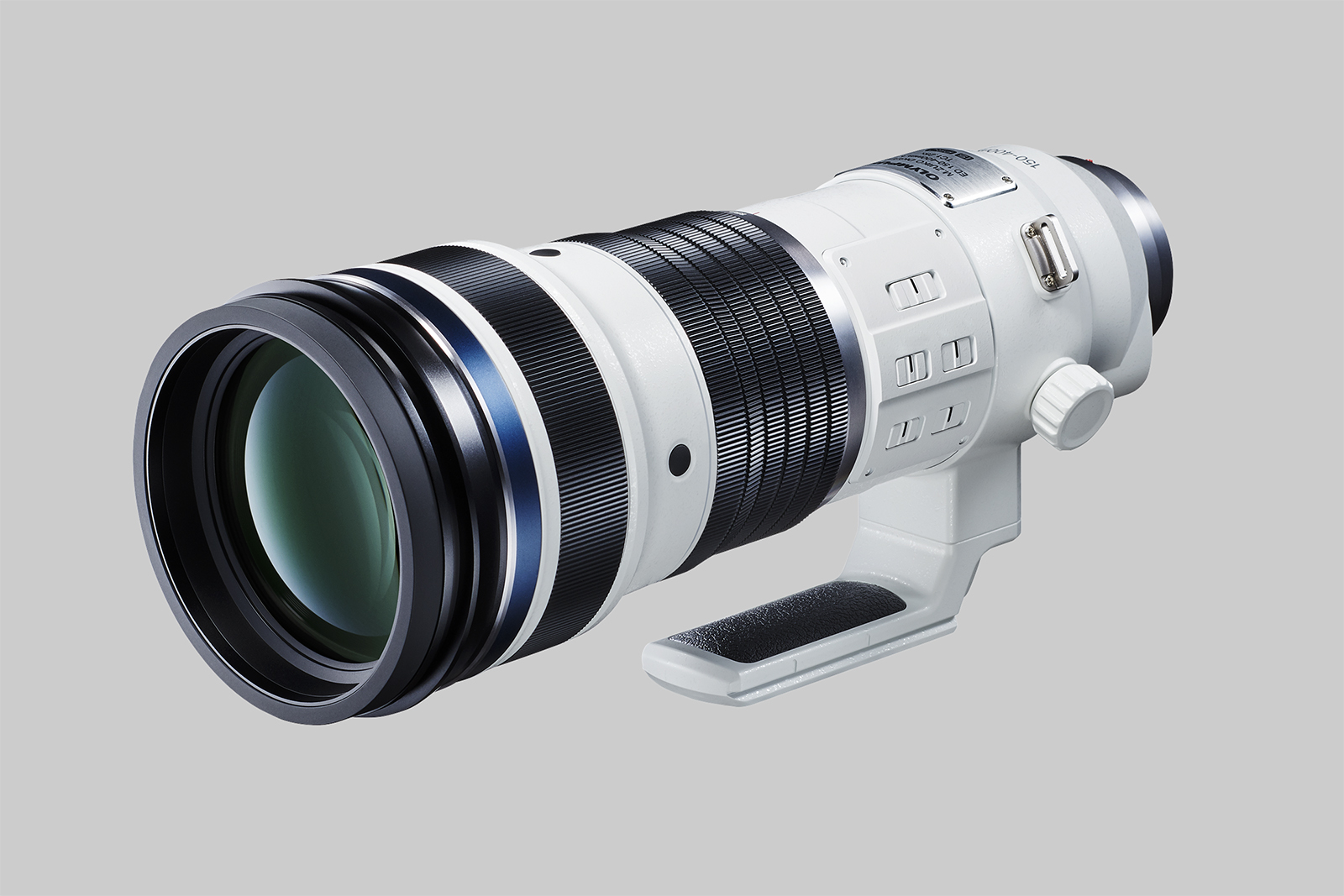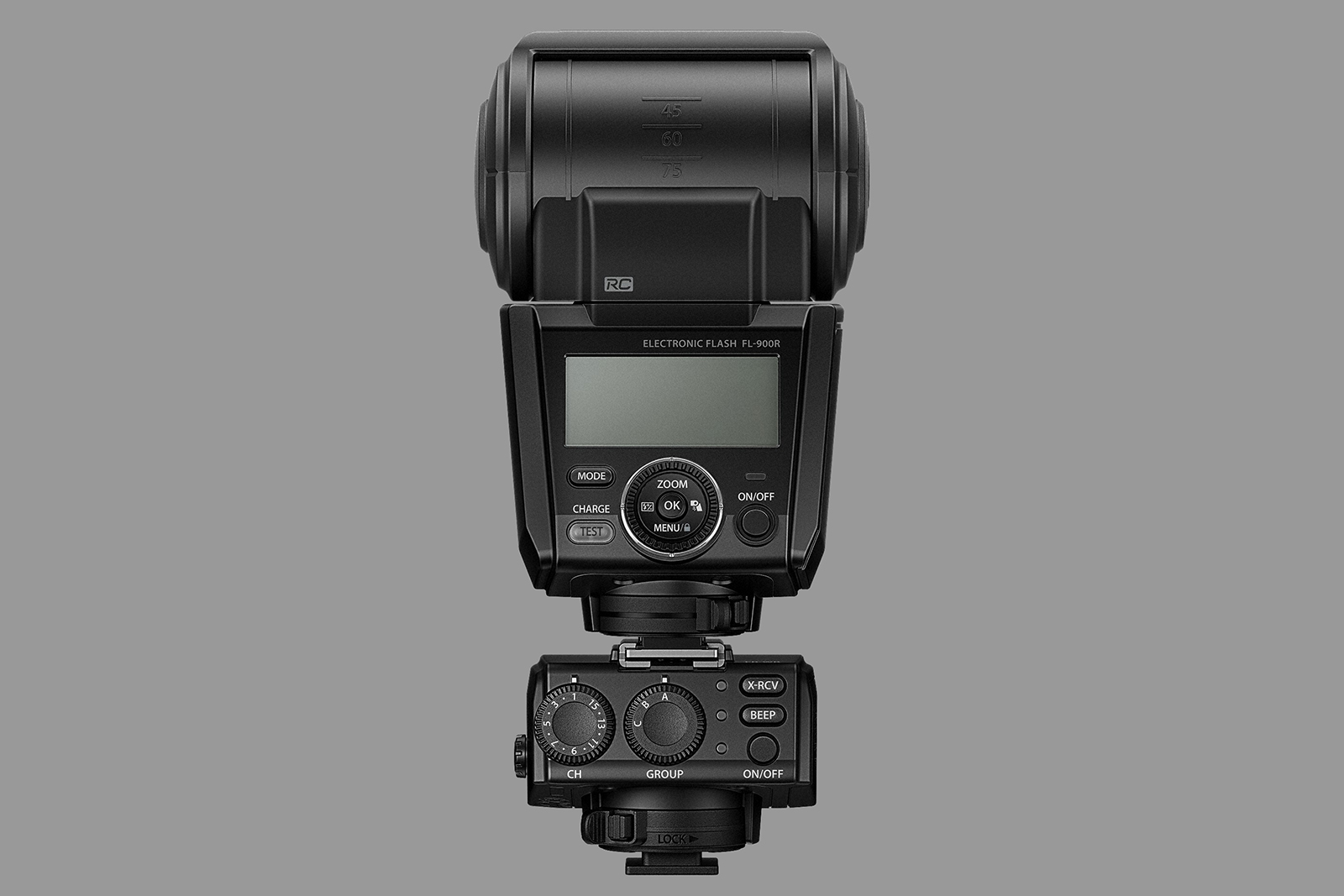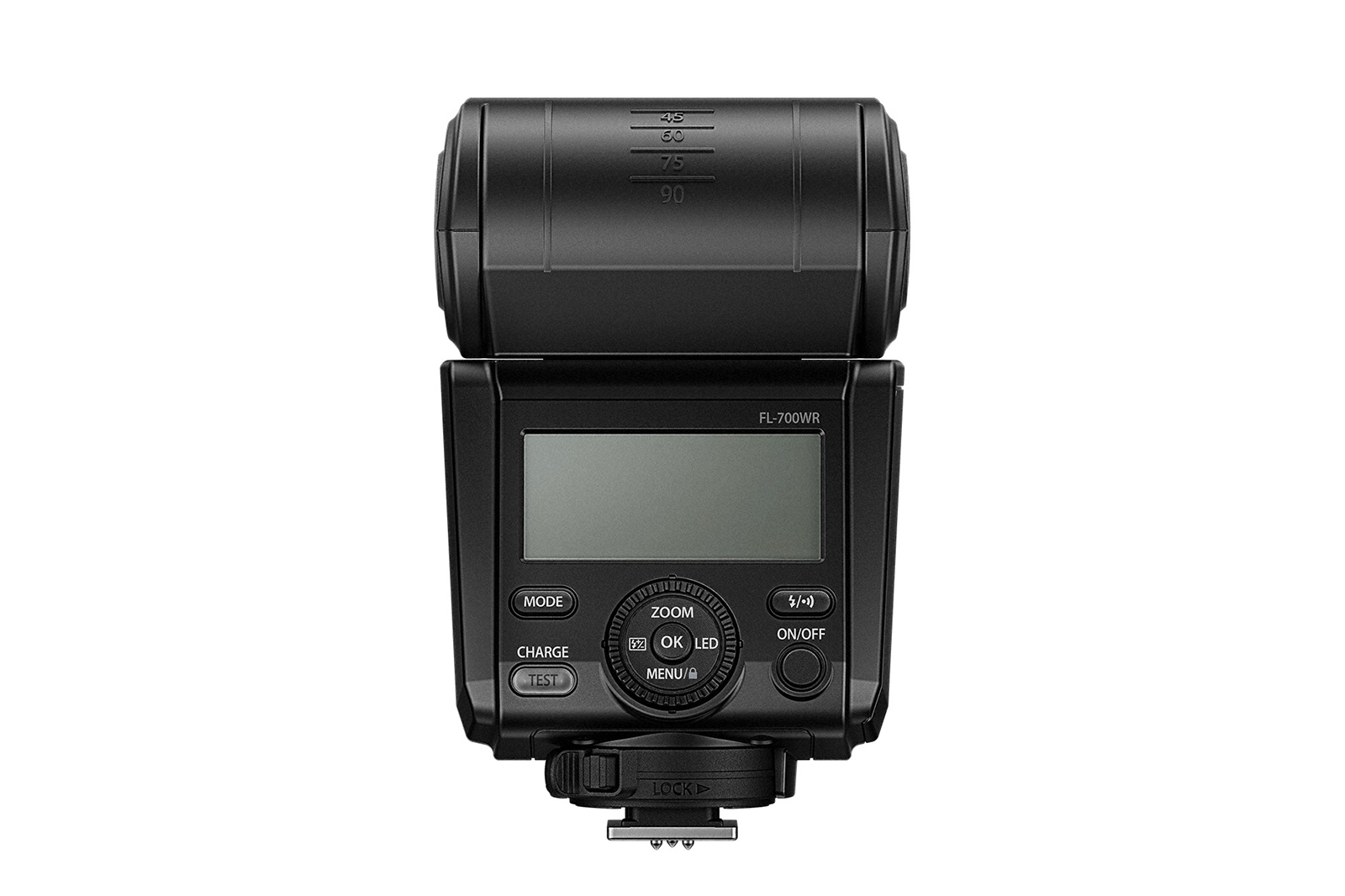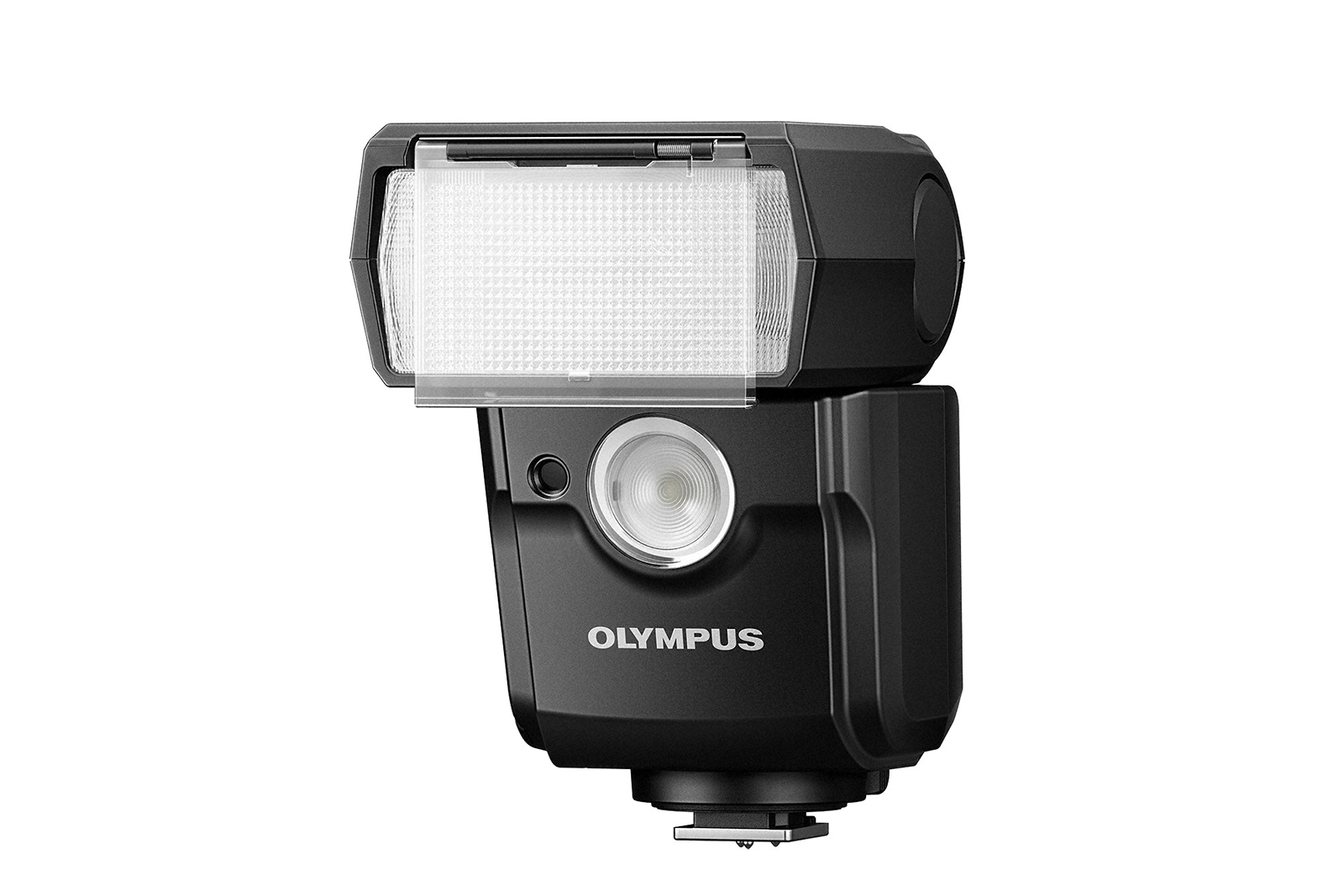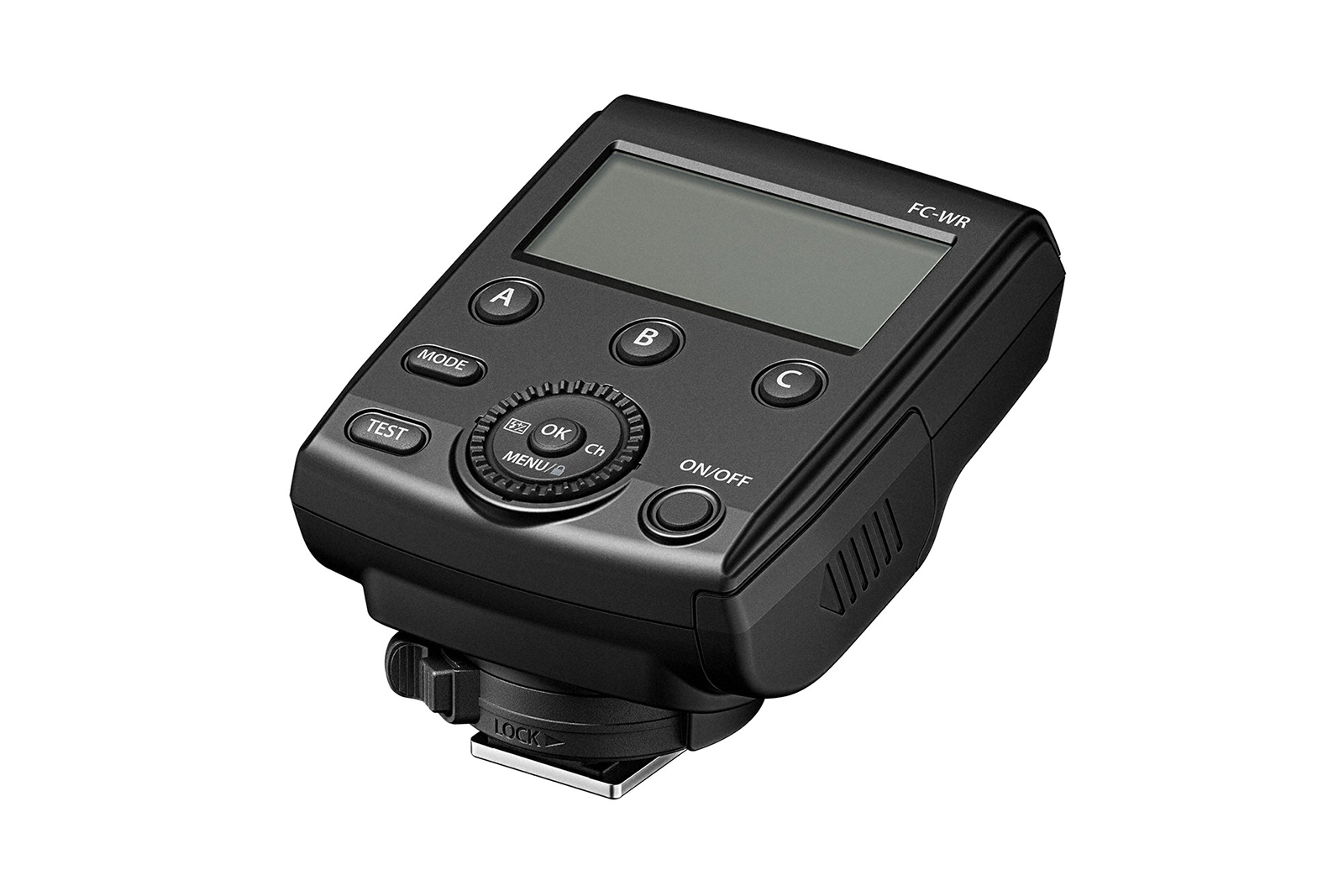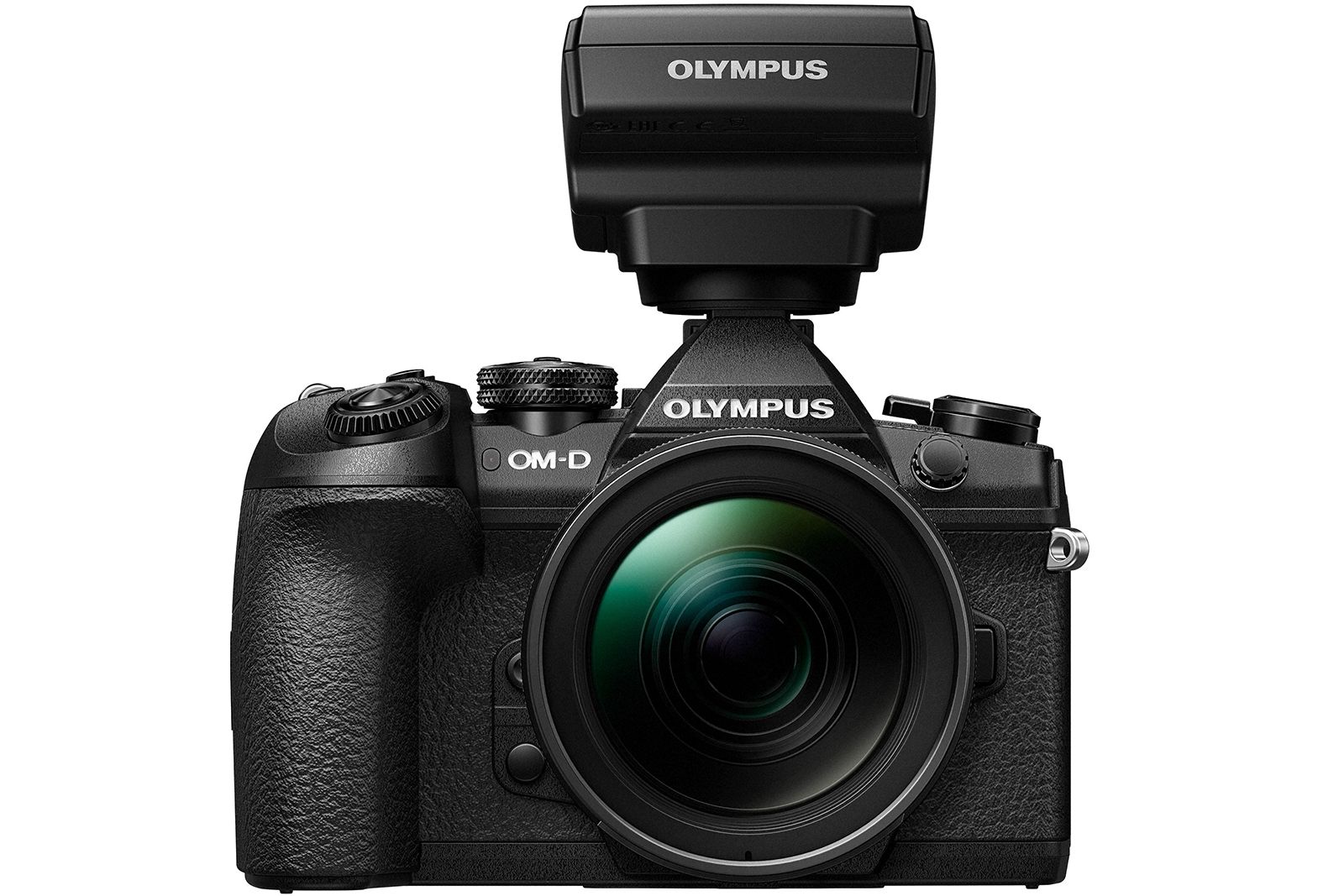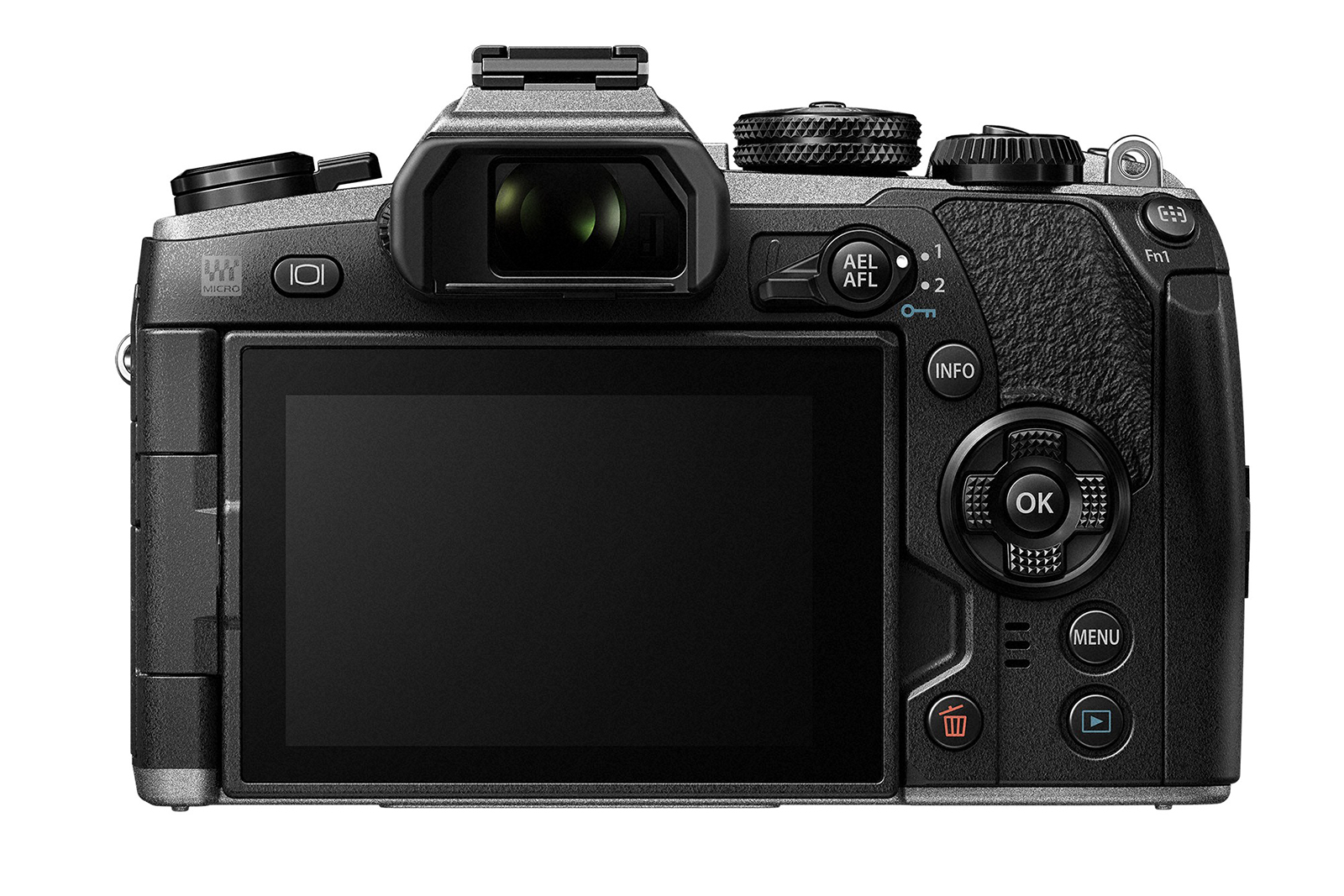Alongside the new Olympus OM-D E-M1X camera, Olympus announced the development of a new telephoto zoom lens with a built-in teleconverter, a stand-alone teleconverter, and a new wireless flash and transmitter. As 2019 marks Olympus’s 100-year anniversary, the company also introduced a special edition silver OM-D E-M1 Mark II camera to honor the occasion. Only 2,000 units will be produced, carrying a price tag of $1,700.
The new lens, which is still under development and bears the decidedly complicated name of M.Zukio Digital ED 150-400mm F/4.5 TC1.25x IS Pro, features a 1.25x integrated teleconverter allowing it to cover a range between 300mm and 1,000mm (full-frame equivalent) without any additional accessories. The lens will also be compatible with the upcoming MC-20 teleconverter which offers a 2x magnification, giving the lens a 2,000mm full-frame equivalent focal length. This is the first Olympus lens to include a built-in teleconverter, following the likes of the Canon 200-400mm f/4L IS.
The lens and teleconverter show one of the reasons why Olympus is continuing to work with Micro Four Thirds, even as other manufacturers have turned away from smaller formats to focus on full-frame. With its 2X crop factor, a Four Thirds sensor makes it easier to build long telephoto lenses. (This is the same concept that allows the Nikon P1000, a superzoom with a tiny point-and-shoot sensor, to have a lens equivalent to 3,000mm.) Olympus hasn’t yet shared full specifications, including the weight of the lens, but says it will be compact and lightweight. The lens will also be weather-sealed and feature optical image stabilization. The teleconverter will also be weather-sealed.
While the MC-20 teleconverter is expected to launch this summer, the M.Zuiko 150-400mm f/4.5 lens won’t launch until sometime in 2020.
Wireless flash comes to Olympus
Olympus’ new FL-700WR flash will be available in February. Like the upcoming lens and teleconverter, the FL-700WR is weather-resistant meaning outdoor photographers can shoot flash photography without worrying about a little rain. The recycle time is 1.5 seconds at full power, and the flash incorporates a multi-flash mode for continuous firing on compatible bodies. It is also compatible with Olympus’s High Res Shot mode, which combines eight exposures for greater resolution, and both focus stacking and focus bracketing modes.
The FL-700WR has a wireless radio receiver built-in and can also serve as a commander unit to control other flashes. Additionally, Olympus is launching the stand-alone FC-WR wireless commander and FR-WR receiver, which are both also weather-sealed, to bring wireless flash control to other Olympus flashes. The radio frequency system can control an unlimited number of flashes in up to three groups, with options to adjust the flash settings independently for each group.
The Olympus FL-700WR lists for about $400, the wireless commander FC-WR for $350, and the receiver FR-WR for $230. All three are slated for release in February.
Editors' Recommendations
- Olympus E-M1 Mark III vs. Olympus E-M1 Mark II: Is the upgrade worth it?
- New teleconverter from Olympus doubles the reach of its longest lenses
